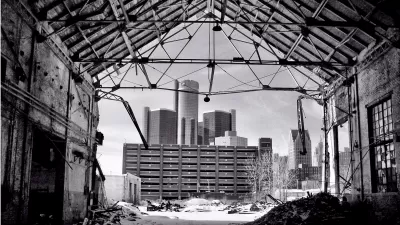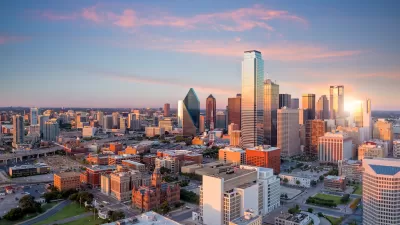Quicken Loans founder Dan Gilbert has an urbanist streak. And only people with his kind of money can singlehandedly buy out big chunks of downtown Detroit. But will his approach to neighborhood-making actually benefit the city as a whole?

In recent years, billionaire Dan Gilbert has been busy buying much of downtown Detroit south of Adams Street. Unlike urban speculators before him, Gilbert doesn’t raze and rebuild or sit on parking lots. He intends to revitalize the neighborhood as it stands, fixing up classic old derelicts and re-purposing them to befit a tech-savvy modern economy.
For that, “people in Detroit talk about Gilbert like he’s the Wizard of Oz, and that might be the closest analogy. He may be a land-hungry billionaire — but he’s the most civic-minded land-hungry billionaire the city has seen in a long time.”
But the picture isn’t all rosy. The article explains how Zappos founder Tony Hsieh attempted to create a walkable business haven in downtown Las Vegas, with disappointing results. An actual visit to Gilbert’s new district is underwhelming. There’s a lack of diversity, and few actual customers to patronize the hip retailers Gilbert attracts. The district seems disconnected from the rest of Detroit.
The article questions whether it is wise to rely on the resources and whims of the super-rich to turn urban cores around. Developers like Dan Gilbert may come armed with dollars and a vision, and even good intentions, but their methods for urban "placemaking" are always dictated from the top down.
FULL STORY: Behind every crumbling downtown is a billionaire who wants to save it

Planetizen Federal Action Tracker
A weekly monitor of how Trump’s orders and actions are impacting planners and planning in America.

Chicago’s Ghost Rails
Just beneath the surface of the modern city lie the remnants of its expansive early 20th-century streetcar system.

San Antonio and Austin are Fusing Into one Massive Megaregion
The region spanning the two central Texas cities is growing fast, posing challenges for local infrastructure and water supplies.

Since Zion's Shuttles Went Electric “The Smog is Gone”
Visitors to Zion National Park can enjoy the canyon via the nation’s first fully electric park shuttle system.

Trump Distributing DOT Safety Funds at 1/10 Rate of Biden
Funds for Safe Streets and other transportation safety and equity programs are being held up by administrative reviews and conflicts with the Trump administration’s priorities.

German Cities Subsidize Taxis for Women Amid Wave of Violence
Free or low-cost taxi rides can help women navigate cities more safely, but critics say the programs don't address the root causes of violence against women.
Urban Design for Planners 1: Software Tools
This six-course series explores essential urban design concepts using open source software and equips planners with the tools they need to participate fully in the urban design process.
Planning for Universal Design
Learn the tools for implementing Universal Design in planning regulations.
planning NEXT
Appalachian Highlands Housing Partners
Mpact (founded as Rail~Volution)
City of Camden Redevelopment Agency
City of Astoria
City of Portland
City of Laramie




























